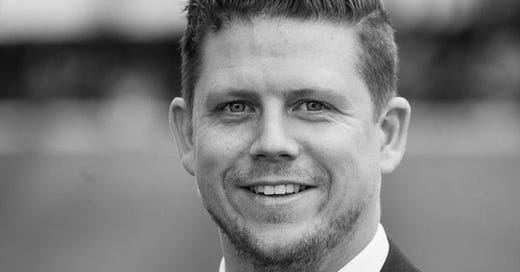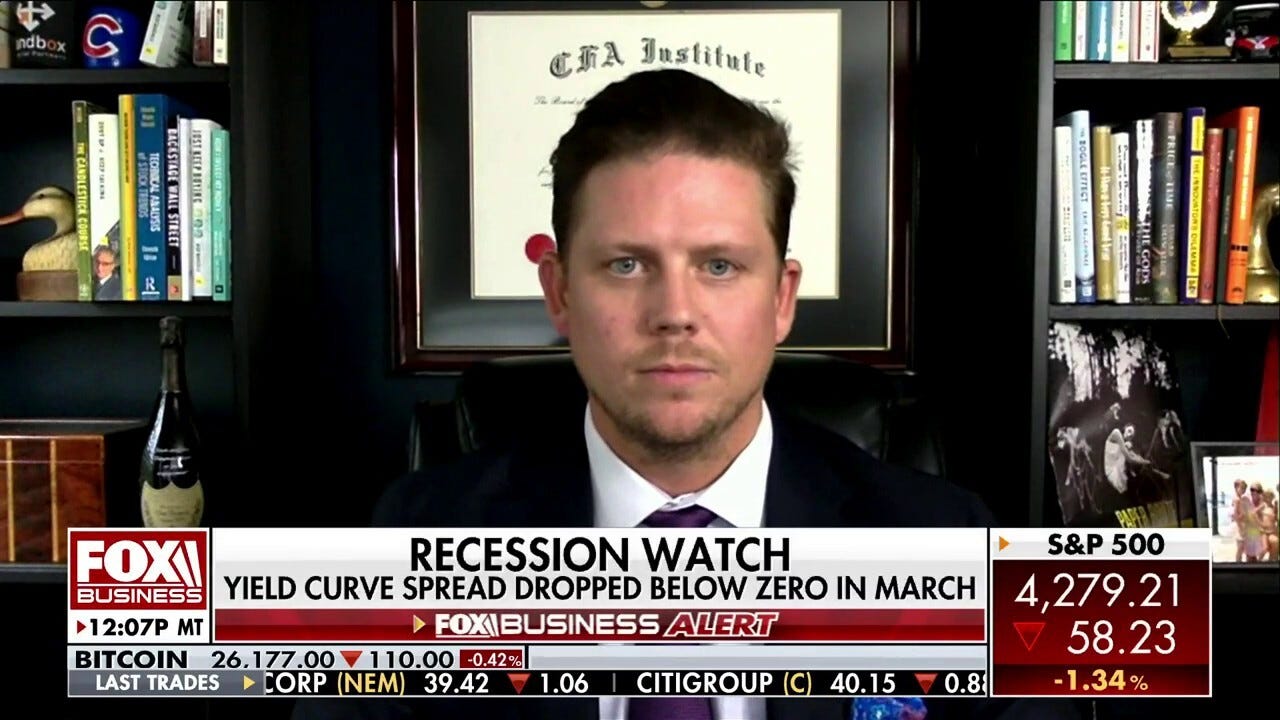I conducted the following interview last fall for The Investor’s Podcast Network, which runs the largest stock investing podcast show in the world, with 180,000,000+ downloads and counting:
For roughly 25 years, a successful dermatologist did just about everything by the book. He built his practice, worked hard, and saved every dollar he could. Through discipline, he amassed a $5 million fortune — without investing in the market.
In 2022, when he began working with Sandbox Financial Partners, the headlines were grim. Markets were tumbling, inflation was soaring, and financial pundits predicted doom. Yet this first-time investor took the plunge under the guidance of Blake Millard, the firm's Director of Investments. As 2022 ended, Millard and his team invested his assets and went risk-on. Two years and a 40% return later, the dermatologist had an epiphany that would haunt many careful savers.
“He said it makes him nervous to have money out of his control because it’s not sitting in cash, but he finally realized the power of compounding,” Millard says. “And he basically said to us, man, I could have like $20 million by now if I had been doing this the past 25 years.”
The story captures the essence of Millard’s investment philosophy: Sometimes, the biggest obstacle to building wealth isn't market volatility, earnings reports, or economic uncertainty — it’s regulating our own emotions. In this case, it was risk aversion. For others, it’s the fear of missing out, chasing hot stocks, or over-trading.
After nearly two decades of managing client money at firms like UBS Private Wealth Management and now Sandbox Financial Partners, Millard has made it his mission to help investors get out of their own way and let the power of compounding work its magic.
When did you become fascinated with markets?
I was always fascinated with math and numbers as a kid, excelling at each step in elementary and junior high. In fact, I see much of myself in my 8-year-old son Hudson, who taught himself 3rd-grade math during the pandemic at ages 4 and 5. And yet, when I attended the University of Michigan in Ann Arbor, I somehow found myself double-majoring in philosophy and history.
The light bulb didn’t turn on until I was too far down the pre-law rabbit hole when I realized I was making a huge mistake. Two summer internships at law firms were enough to convince me to make a pivot. And just in time, because I graduated in 2007 at the heart of the Global Financial Crisis when precisely no one wanted to hire a bright-eyed and bushy-tailed young graduate with zero market experience.
Tell us a bit about your career journey to Sandbox Financial Partners.
In 2021, I was burnt out from working nearly a decade at UBS Private Wealth Management in Washington, D.C. I loved working as an Investment Associate, building custom strategies, running portfolio analytics, meeting with current and prospective managers, engaging clients in reviews, trading, and interacting with the CIO research team.
Working for a top private wealth team (across the entire firm) was a great professional experience, but the time and distance constraints at UBS greatly restricted the scope of my responsibilities to my wife and four kids at home. So, I made a horizontal shift to the RIA space in 2021 as part of the “Great Resignation” that swept up much of the nation at the time.
With Sandbox, I’m doing the same things I loved at UBS but with greater autonomy and flexibility. I work from home, so I’m fully accessible to both work and the family at any time of day. It’s fantastic.
Can you describe your investment approach and the principles guiding your decision-making process?
As the Director of Investments and Portfolio Manager for a Registered Investment Advisor (RIA), my fiduciary responsibility to the firm and our clients is to service client portfolios with bespoke and custom-tailored solutions overlaid with a strict framework for risk management.
A core foundation of beliefs always guides me:
Manage your emotions: Emotions can be the biggest obstacle to investment success; emotions make most investors do the wrong thing
Maximize the probability of success: Assets should match liabilities; our goal is to maximize the probability of success by coordinating your financial resources with your responsibilities
Preserve capital: Avoiding significant losses is key to long-term, durable investment growth
Remain disciplined: The only good investment plan is the plan that you can stick with and execute through adversity
Invest with a process: Rebalancing, tax overlays, goals-based investing, and other forms of process-driven investing principles can help improve the probability of success and mitigate volatility
Extend your time horizon: In the long run, markets reflect fundamental value, earnings cycles, and structural regimes; short-term fluctuations in momentum, sentiment, support/resistance zones, and positioning offer opportunity
As Jason Zweig once said: “Good advice rarely changes, while markets change constantly. The temptation to pander is almost irresistible. And while people need good advice, what they want is advice that sounds good.”
We follow Zweig closely. Great, insightful writer. He likely would agree that regulating emotions may be the most important thing.
That’s the hardest thing. Money is a hugely emotional component of life — it dictates where you live, the clothes you buy, the schools and vacations you afford. Everything is dictated by money. It’s unfortunate, but it’s true.
We carry an emotional burden where everyone wants all the upside and none of the downside. People often become their own worst enemy. I’ve managed client money for nearly 20 years, and people have the same complaints. They make the same mistakes. In August, amid the Yen unwind, I was getting emails and calls from people like, oh my gosh, we need to liquidate. I was like, wow, I’m buying when I see stuff like that. The stock market is the only thing in the world where people run out of the store when things are on sale.
What methods do you employ to assess and mitigate risk within client portfolios?
We employ a variety of tools to manage risk in client portfolios.
Diversification to ensure portfolios are properly diversified across asset classes, sectors, styles, factors, and geographies; here we utilize a Modern Portfolio Theory framework
Stress testing / scenario analysis to assess how managers and portfolios would perform under extreme market conditions or hypothetical scenarios; here we use Monte Carlo simulations, historical event backtesting, and platforms like BlackRock’s Aladdin
Performance and risk metrics to measure the return on investment relative to the level of risk to help gauge the efficiency of the portfolio; we have tools in Orion and 3rd party providers such as YCharts to help assist in these endeavors
Performance attribution and benchmarking to evaluate the sources of returns and identify risks relative to benchmarks to keep ourselves honest; this process also ensures that strategy aligns with client goals
Do you specialize in certain types of clients?
We work with clients from all walks of life and ages. Those building wealth and those distributing wealth. People who work in corporate and people who are self-employed. People who are experienced with investments and people with no investment experience.
Building a financial plan and a bespoke solution for a specific client’s unique financial background is an exciting experience. The thrill I get from the design and construction process to the accumulation phase many years into the future is an incredibly organic and gratifying feeling. Helping someone reach their financial goals is why I do what I do.
How much wealth do your clients have?
When I worked at UBS, we worked with clients with $50 million or $70 million or more. A few were over $100 million. Our average client at Sandbox is between $500,000 and $5 million. But no matter how much you have, even with a small, simple portfolio, it’s about working with someone like us to get educated. We help people make better decisions. Hiring a professional might not change the entire outcome of your financial path, but it can make the ride more palatable.
What inspired you to start your newsletter, and how has it evolved, if at all?
Thank you. I started writing The Sandbox Daily in the spring of 2022 when the bear market badly tripped up investors. Initially, the project started internally at Sandbox to educate and advise my financial advisors on what was happening in the economy and financial markets. My main partner, Brian Salcetti, witnessed the true potential of my internal research briefs and thought others could benefit from these insights and perspectives.
So, after a few months of writing internal memos, we opened it up to the public, totally free and completely transparent. Our commitment to readers is a daily perspective (when markets are open) to help investors make sense of capital markets, investing, and personal finance. I read a ton of research daily; my goal is to distill some of the most salient and interesting trends and data points into an informative and fun investing brief.
Tell us about your wonderful post about your late father, “Life moves pretty fast,” and what prompted it.
As someone who consumes and produces financial content 24/7, it’s hard to step outside your comfort zone and write about something deeply personal and open yourself up to an audience that knows very little about you on a personal level. My father passed away suddenly in the spring. I was not prepared for this. No one is.
On the one hand, I was a grieving son; on the other, I was the executor and personal finance guru who needed to step up and help my mom and broader family. Threading these two roles has been quite challenging. That piece was as much therapy as a statement to help prepare others.
The lesson: Life goes so quickly, we’re all busy, and sometimes we get caught up in nonsense. I’m guilty of it, too. I’ve started to meditate and try to become more present.
What are some common issues or challenges you see clients face about their overall financial life?
Investors make the same mistakes as they did decades ago. People can’t help themselves. It’s why markets are inefficient and it’s why behavioral finance is just as important as traditional finance. It’s also why I encourage most people to hire professional help in the same way you hire an electrician when the lights go out or you hire an attorney when you encounter legal trouble. You are hiring someone for guidance, their experiences, and to protect you from yourself.
Do you want to share anything about lessons or your life journey?
I’m teaching my four kids to invest. My oldest son, 8, is learning right now, and he owns consumer-facing names like Ferrari. I funded each of my kids a $5,000 account, so the stakes are low. These won’t be get-rich accounts, but they’re for teaching them how to invest. They really wanted to buy Nike stock, but I explained to them that there are good companies, and then there are good stocks. Those aren’t the same thing. So we’ll talk about why that’s been such a disastrous stock.
What are your favorite books (or other educational resources) within finance and elsewhere?
Everyone must read Nick Maggiulli’s Just Keep Buying. Those three words underpin my personal investment philosophy and framework. It doesn’t matter about presidents, interest rates, market breadth, or whatever. Just invest a little every month over decades. Don’t time the market; just keep buying.
Dive deeper
Read Blake’s popular newsletter, The Sandbox Daily, or check out his firm’s website to learn more about his services around financial planning and wealth management. You can also follow Blake on Twitter/X.





